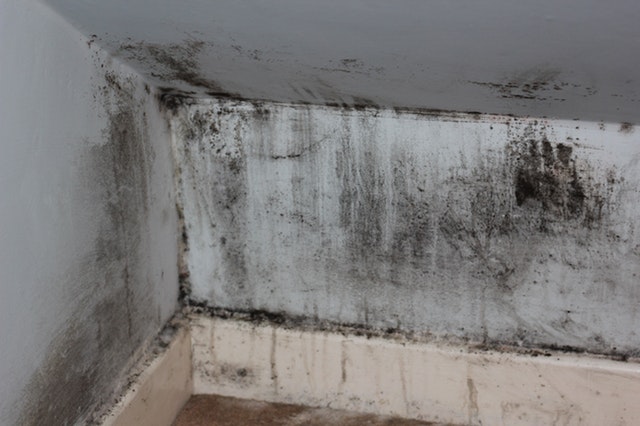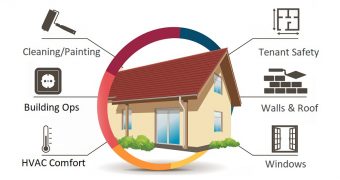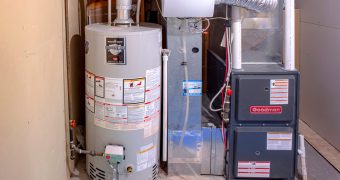Mold Remediation
It’s the peak of the year where heat and humidity can aid in the development of mold in your rental units. Humidity, moisture, warmth, darkened rooms or closets, reduced air flow, and rain storms all conspire to give mold spores the maximum chance to spread and grow.
Landlords are responsible under local laws for the damage caused by mold, especially the worst form we’ll introduce you to, and tenants can and have sued landlords for lost wages, pain and suffering. Ignoring a mold issue can lead to increased liability.
Given the threat and property damage mold creates, you should know the 9 top places mold grows, and the negative impact it has on your tenant’s health. Are your inspections finding the mold menace?
Legionnaires Disease Still a Threat
Let’s explore ways to identify mold growth and prevent it. The fuzzy menace is more harmful than you imagine. That’s why conducting rental property inspection reports this time of year and communicating better with tenants is wise.
A friend of mine who has since passed away, once contracted Legionnaires disease from a moldy air conditioning system in a building. This terrible disease almost killed him but after a long hospital stay, and near death, he managed to stay alive. A heroic effort, however he did pass away from lung cancer decades later. For property managers, the legal and brand image threat is something to take seriously.
It’s Smart to Get Proactive About Mold
While California, Colorado, Arizona, New Mexico and other states in the dry west may not be plagued with mold issues, the east, coastal, northern and southern regions find mold an ever present danger. In Germany, UK, and parts of Australia, mold is a persistent threat.
Any time the air temperature rises above 77 degrees fahrenheit, mold can spread fast. And mold can stay active indoors in the winter, where modern air tight environments keep humidity high.

Even beautiful kitchens have windows, walls, plumbing, sinks, dishwashers, and floors where mold can generate, spread and thrive.
Tenant Problems
I visited a rental unit last year, where the tenant disconnected the clothes dryer venting which took damp air outside. Not only was the moist air released back into the rental unit, the lint was blown all over the laundry room. What a mess and health threat!
Tenant neglect or willful contraventions of the lease can create big costs leading to evictions, court costs, vacancy and lost staff time.
Types of Mold to Watch Out For
There are 3 categories of mold which can hurt people: allergenic, pathogenic and toxic. Some molds can produce a toxin called myotoxin which attacks humans. Stachybotrys chartarum or black mold is the most dangerous. It can be ingested in different ways.
4 kinds of mold found indoors in apartments and homes:
- Cladosporium
- Penicillium
- Aspergillus
- Alternaria
Too many times, mold spores grow in attics, ceilings, bathrooms, windows, and walls where they can do enormous property damage.
The CDC says this about mold: «molds can cause nasal stuffiness, throat irritation, coughing or wheezing, eye irritation, or, in some cases, skin irritation. People with mold allergies may have more severe reactions. Immune-compromised people and people with chronic lung illnesses, such as obstructive lung disease, may get serious infections in their lungs when they are exposed to mold… and the potential for the development of asthma.»
The threat of future health problems may raise the threat of future law suits, and your ability to get landlords insurance.
Where Does Mold Grow?

In today’s air tight homes and apartments, humidity rises to create the perfect conditions. What to look for?
- holes in roof shingles — where rain water can seep down into the attic onto insulation and rafter boards. This is so frequent that it’s the first place for inspectors to investigate.
- bathroom walls and baseboards — yes, the bathroom provides humidity and everything else mold likes
- air ducts — air conditioning can cause condensation at any time perfect for feeding mold
- toilets, show floors and walls, and sinks – if tenants neglect cleaning and disinfecting, the opportunity for bad molds is high
water pipes — whether from leaks or condensation, your water pipes hidden in floors and walls are a threat
under carpets – the microspace under carpets has the conditions mold like with dust, food bits, and moisture.- windows — windows always create condensation issues and the moisture can seap down into the window sill and then into the wall.
- walls — condensation forms inside walls too where cold air meets warm
- refrigerator drip pans — air circulation is usually poor under the fridge and there’s water present. The tenant may never look into the issue.
- new washing machines — front loading clothese washers usually have doors which are closed all the time thus trapping moisture inside and that lets mold take hold and emit offensive odors.
The Cost of Mold Remediation
The companies that repair mold damage quote anything from $500 for a small space to as high as $10,000 for a home. If your rental unit has been flooded the costs are very high so hopefully your property insurance coverage will take care of it.
You can buy mold testing kits and detection devices to help you discover problems in your units. A good preventative maintenance practice is to frequently change the home air filters. At the Denver Apartmentalize trade show, a company that sells air purifiers gave me a demo on advanced air cleaning systems using UV light. As a renter amenity, these can raise renter value and allow you to grow your revenue.
Advice For Tenants
A simple and easy process is to open up better communications with tenants using property management software. Tenants can report issues and if mold is an issue, you can remind them of good unit maintenance practices of running bathroom vent fans, cleaning windows, inspecting closets or bathrooms for mold, leaving washer doors open, and reporting any water stains on the ceilings. This gets them active in the process of being mold-free!
If mold is an ever present danger, then using a system can help a lot, as well being a tangible benefit for an increasing number of rental prospects who are concerned about air quality and mold threats.
Check out ManageCasa’s amazing property management software right now, and begin doing consistent high quality home inspections to help you minimize your operations and tenant related risks.

Start a FREE Trial Today!
See also: Rental Management Software | Rental Property Software Reviews | Real Estate Market | Property Management Apps | Property Investment | Rent vs Buy Calculator | Property Management Companies | Hawaii Housing Forecast



 water pipes — whether from leaks or condensation, your water pipes hidden in floors and walls are a threat
water pipes — whether from leaks or condensation, your water pipes hidden in floors and walls are a threat

